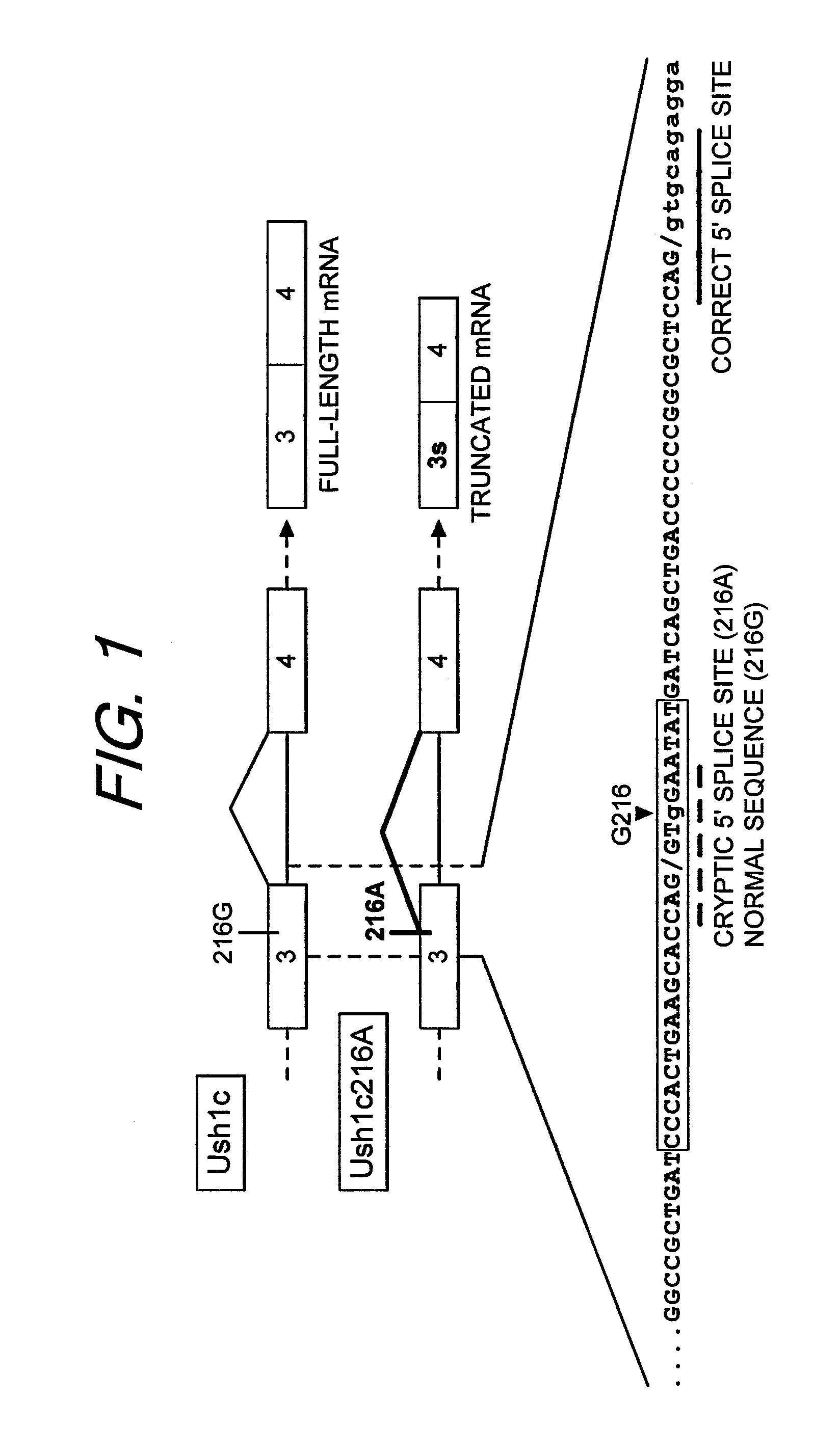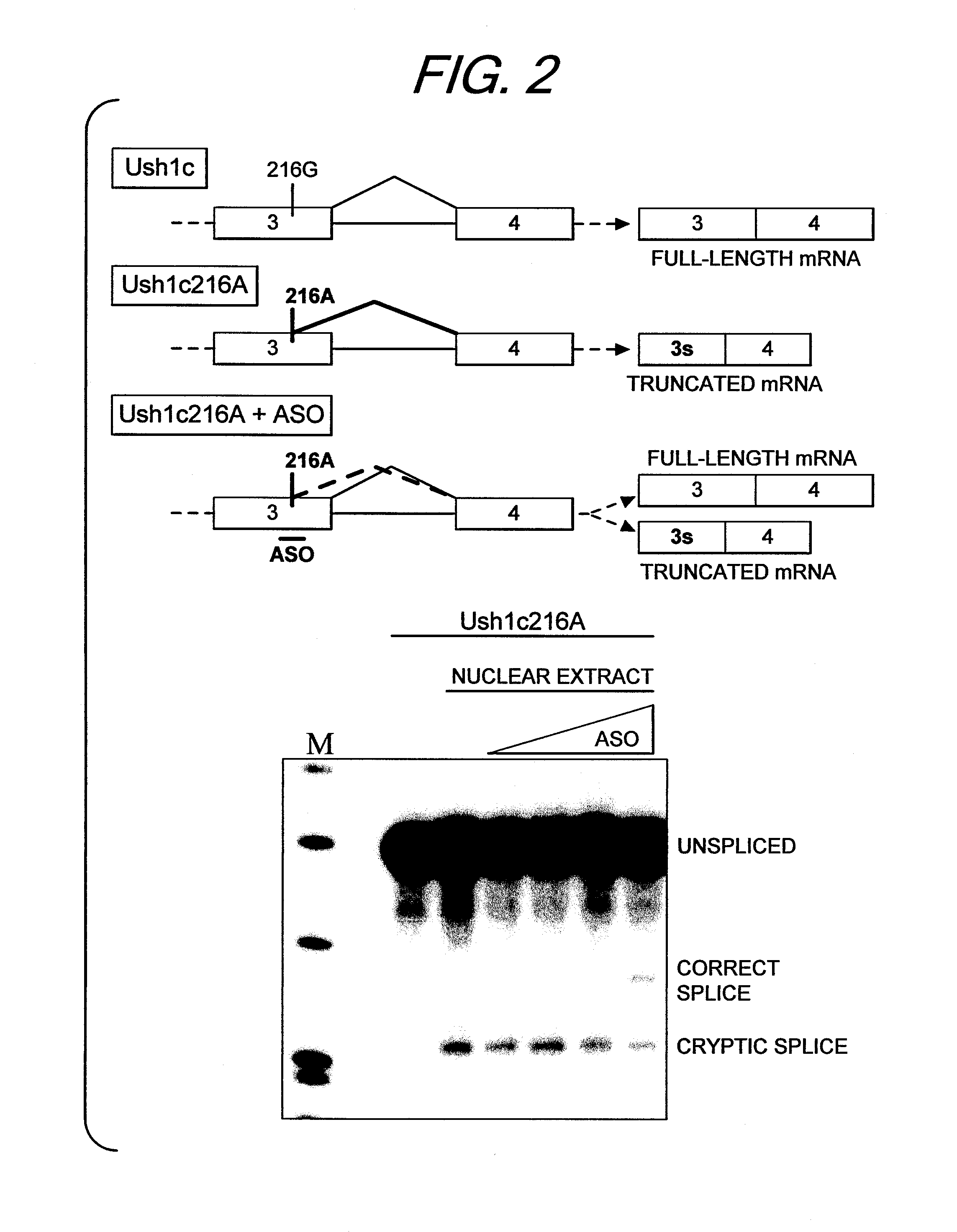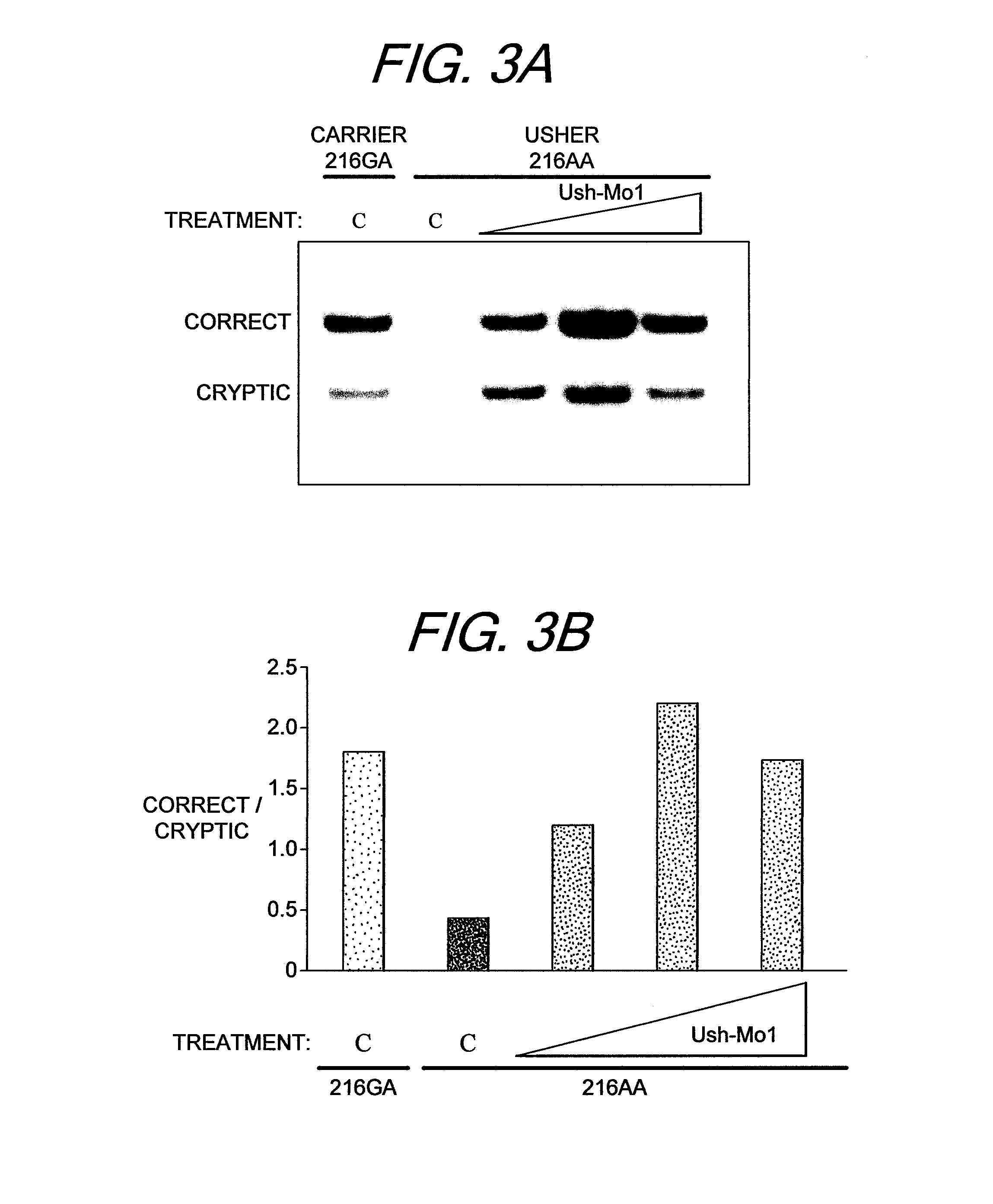Antisense oligonucleotides that target a cryptic splice site in Ush1c as a therapeutic for Usher syndrome
a technology of cryptic splice site and antisense oligonucleotides, which is applied in the field of usher syndrome therapy, can solve the problems of incomplete blindness, no cure for this debilitating disease, and many usher genes that are difficult to achieve traditional gene therapy approaches based on gene delivery
- Summary
- Abstract
- Description
- Claims
- Application Information
AI Technical Summary
Benefits of technology
Problems solved by technology
Method used
Image
Examples
example 1
Development of an Ush1c216A Splicing System to Test ASOs and Small Molecules
[0032]The present invention provides an Ush1c and Ush1c216A minigene comprising exon 3, intron 3 and exon 4 of the Ush1c gene. These minigenes are used as templates to create wild-type and G216A mutant Ush1c mRNA that can be spliced in HeLa nuclear extract. The splicing of these transcripts in HeLa nuclear extract results in faithful recapitulation of the expected full-length splicing of the wild-type gene and cryptic splicing from the G216A mutated transcript. These results demonstrate that this cell-free system can be used to accurately model normal and disease-associated splicing caused by the G216A mutation.
[0033]We next tested several ASOs targeted to the cryptic 5′ splice site in the cell-free splicing system and assessed switching from the use of the cryptic 5′ splice site to the correct 5′ splice site. FIG. 2 shows these ASOs effectively increased splicing to the correct 5′ splice site in a dose-depe...
example 2
ASOs that Improve Ush1c216A Splicing in Cell Culture
[0034]The effectiveness of ASOs in achieving splice-site switching in cultured cells was tested. An Ush1c minigene expression system was created to test the effect of the ASOs on the splicing mutant Ush1c gene transcripts in cells. The ASOs effectively correct the defective splicing and result in the generation of normally spliced mRNA.
[0035]We have also developed cell lines from the tissues of Ush1C 216A mice that carry the human mutation that creates the cryptic splice sites. The ASOs potently redirect splicing to the correct splice site thereby rescuing Ush1c expression.
[0036]FIG. 3 shows that we have successfully corrected splicing of Ush1C 216A mRNA arising from the human Ush1C216A gene in cell lines derived from a patient with Usher Syndrome carrying the Ush1C216A mutation in the Ush1C gene.
example 3
Correction of Ush1c216A Exon 3 Cryptic Splicing in Mice Using Optimized ASOs
[0037]The ASOs that we have utilized shown in Table 1,2 to target cryptic splicing in Usher syndrome shown herein have been tested in an Ush1c.216a minigene expression system (Table 1) and in the Ush1c216A knock-in Usher syndrome mouse model (Table 2). FIG. 4 shows that the preliminary results indicate that the ASOs correct splicing in the cells of a number of tissues such as the kidney, and that this effect can last for at least 29 days after the final treatment.
[0038]
TABLE 1Modulation of Ush1c.216A splicing of RNA transcriptsfrom a Ush1c.216A minigene.%SEQMORPHOLINOStartcrypticIDNOSiteSequenceRegionsplicingNOUsh1C_MO1138577AGCTGATCATATTCTACCTGGTGCTUSH1C2.842Exon 3(G to Amt)Ush1C_MO2138569ATATTCCACCTGGTGCTTCAGTGGGUSH1C5.753exon 3(G / Amt)
[0039]
TABLE 2Modulation of Ush1c.216A splicing in micekidney using vivo-morpholinos%SEQMORPHOLINOStartcrypticIDNOSiteSequenceRegionsplicingNON / AN / AN / Acontrol99.543N / AtreatedU...
PUM
| Property | Measurement | Unit |
|---|---|---|
| frequency | aaaaa | aaaaa |
| frequencies | aaaaa | aaaaa |
| body temperature | aaaaa | aaaaa |
Abstract
Description
Claims
Application Information
 Login to View More
Login to View More - R&D
- Intellectual Property
- Life Sciences
- Materials
- Tech Scout
- Unparalleled Data Quality
- Higher Quality Content
- 60% Fewer Hallucinations
Browse by: Latest US Patents, China's latest patents, Technical Efficacy Thesaurus, Application Domain, Technology Topic, Popular Technical Reports.
© 2025 PatSnap. All rights reserved.Legal|Privacy policy|Modern Slavery Act Transparency Statement|Sitemap|About US| Contact US: help@patsnap.com



